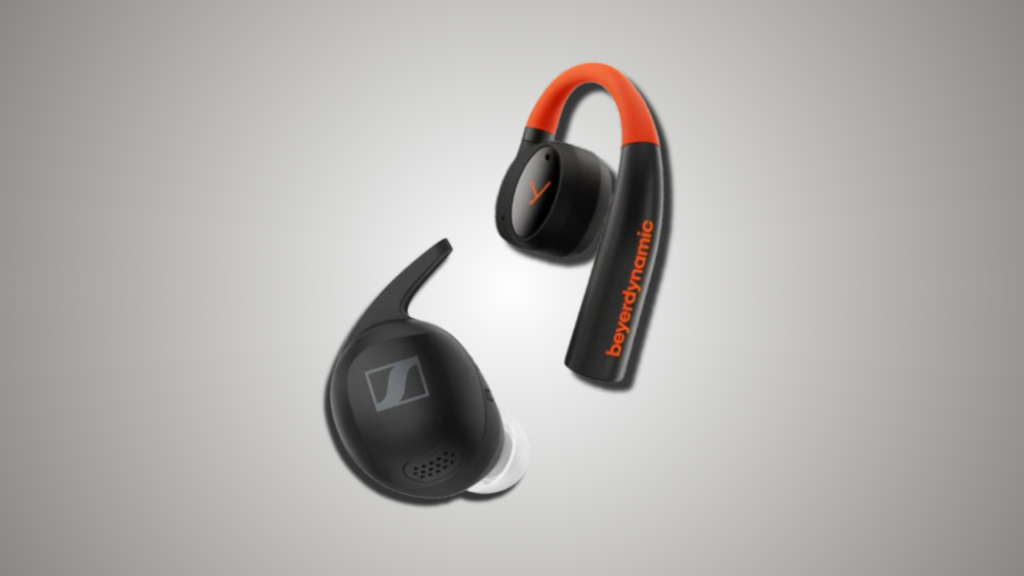People look for headphones and earbuds that are not only good for everyday casual listening, but something for when they are active as well. Sweat resistant, secure ear fit, and long lasting battery are only a few things people look for, and that doesn’t even narrow down the list. Today, I’m comparing two sport earbuds/earphones from two well-known companies to see what some of the differences and similarities are with these types of listening devices. The Sennheiser MOMENTUM Sport and the beyerdynamic Verio 200 are both priced around the same range, so let’s see what each has to offer.
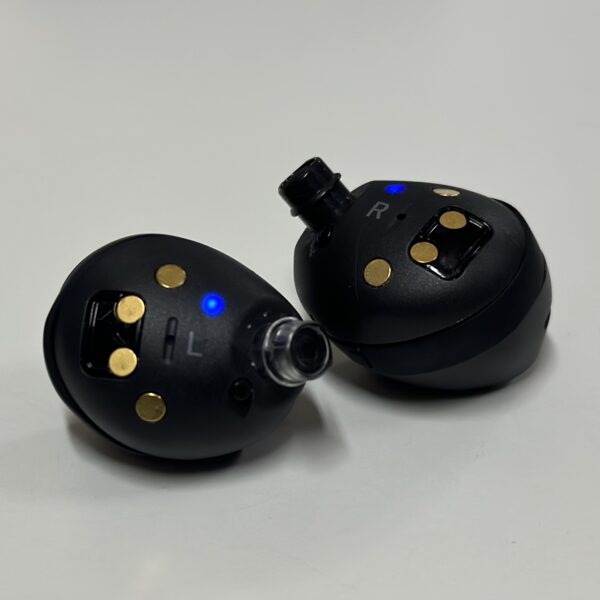
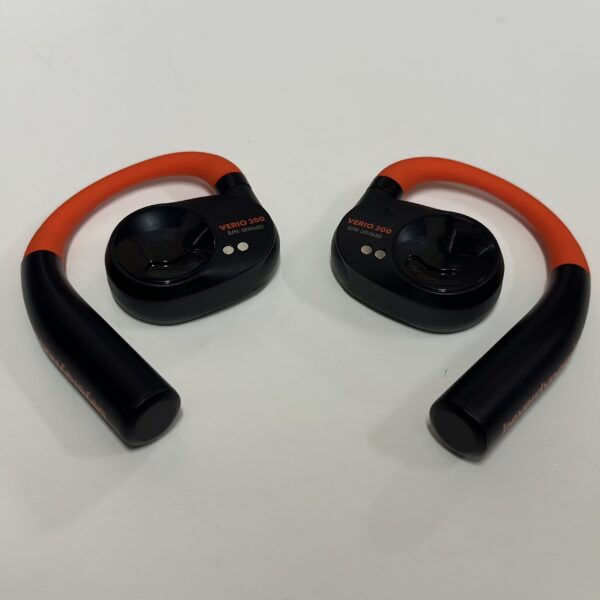
What Comes In The Box
| Sennheiser Momentum Sport | Beyerdynamic Verio 200 Sport |
|
|
You may be asking: why compare these two models when they are very obviously different? One in-ear, one over ear; one noise-canceling, one isn’t. Why compare them at all? Won’t they be different listening experiences? The answer is yes, they do sound different, but we should remember that the audience for these is the same. People are looking for active earwear, and some people may be overwhelmed by the options. To be sure that you get the right one for your personal preferences, it’s worth putting the two side-by-side.
Aesthetics and Functionality
The look of these earphones are both very different. Let’s start with the Momentum Sports, who have an in-ear design that makes them nearly hidden during use. They come in a couple different colors, such as black and green, and they have a charging case to match. The Verio 200, on the other hand, is an earphone that hooks over your ear and rests right on top of your ear rather than going in. It has one sport model, which has orange accents that are good for reflective wear. Both ensure a secure fit, be it through a perfect in-ear fit or an over-ear strap that doesn’t allow the earphone to fall out. After wearing both, they were both comfortable and as secure as advertised. The Momentum Sports were much more familiar while wearing, having used Airpods and earbuds for most of my listening prior. The Verio 200s were a bit odd to wear at first, and I wasn’t sure I was wearing them right. Because they weren’t plugged into my ears, I had a constant worry that they were going to fall right off and I wouldn’t be able to listen correctly. That fear was dissuaded very quickly, as I adjusted to the wear of the Verio 200s and they became comfortable after extended use.
I think the functionality of Verio 200 was clearer than the Momentum Sports. The Verio 200 was easy to pair to my phone, and the app was downloaded after I had started listening. There was a clear button on the charging case that I was able to press and hold, and my device recognized it instantly. The Momentum Sports took a little more troubleshooting, but the app provided a clear step-by-step instruction on how to connect and start listening. In terms of quick use, the Verio 200 takes the cake and has the upper hand on the Momentum Sports.
Tech Features
| Sennheiser Momentum Sport | Beyerdynamic Verio 200 Sport |
|
|
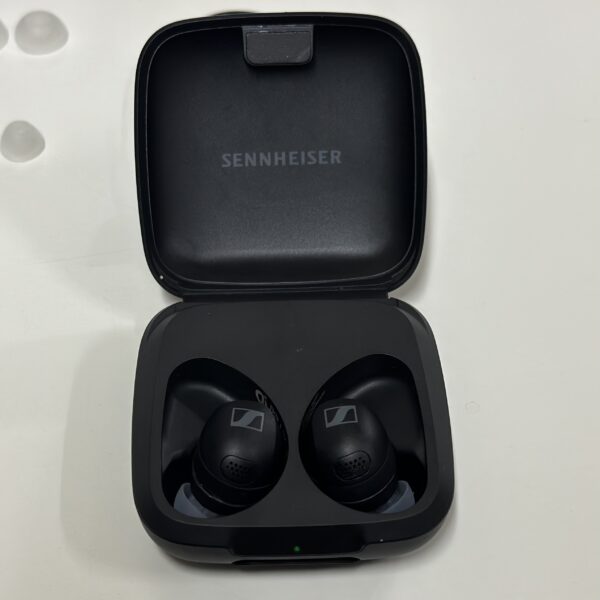
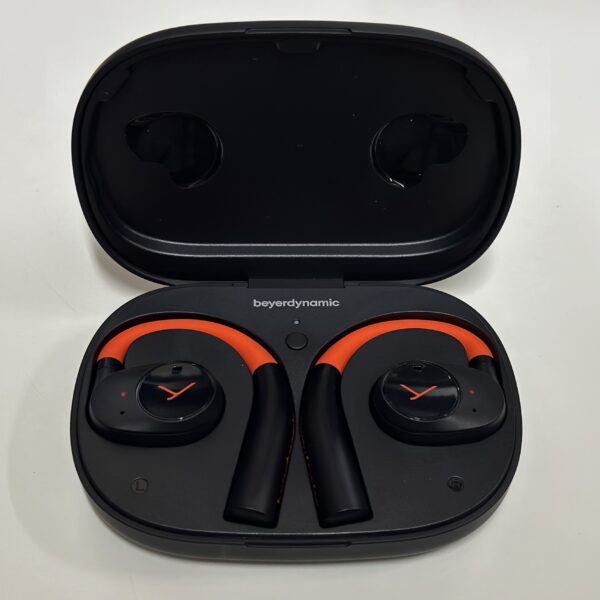
Listening Review
Soundstage & ANC
Due to the different wear of these, the soundstage was also very different. The Verio 200s had a very open stage, and it was like music was playing in the room with me. There was little to no sound isolation or noise cancellation, which can turn people away from this model. However, I would argue that this makes these earphones safer to use because you are more aware of your surroundings. Still, noise-cancellation is something that should be applauded in earphones, as it’ll give you more detailed listening without outside distraction. The Momentum Sports give you just that: a detailed listen with excellent imaging and very good ANC. You can toggle between modes of passive versus noise canceling at varying degrees with the app as well. The soundstage itself is a little narrower, but that comes as a common trend in noise canceling earbuds.
Low Frequencies
If you’re looking for a strong low end in your listening, both of these earphones will deliver. The Momentum Sport has a really rich low end, and the in-ear quality to them allows for a wider range. The low end hits hard and has great detail, all without being drowned out by the noise cancelation or becoming too muddled. The Verio 200 also has the same richness, but it’s more difficult to get that same hard-hitting bass tones without cranking the volume to a dangerous level. You still get the driving bass tones that will energize a workout, but at the same time you might feel it rolls off a little too soon.
Mid-Range Frequencies
I have to give credit where credit is due: the Momentum Sports have a fantastic mid-range. They offer clarity, detail, and balance across timbres and textures. It served as a great transition range as well from lows to highs. The Verio 200s did offer a pleasant listen in this range as well, but it took a moment to get there. Because the speaker had to be placed just right on the ear, the sound was slightly compromised due to user error. The mid-highs sounded a bit scooped out and it was difficult to tell whether it was the speaker in the earphone itself or the way I was wearing it. This loss in mid-highs was slightly disappointing, and it made some of my favorite tracks a bit different and odd to listen to. Despite that, the Verio 200 had good clarity and detail in the rest of the range. The Momentum Sports just managed to pull ahead enough to be a clear winner in this area.
High Frequencies
Both of these models offer a high end that provides balance and brightness. It is a nice contrast to the low end that thrives in both, especially the Momentum Sports where they are also subject to the low tones that come with noise-cancellation. Even the Verio 200 has a lot of low tones, and when the high end comes in all sparkling and airy, it’s like a wave of relief to get that balance. The only negative thing about the Verio 200 high end is that it sounds slightly separated rather than cohesive with the rest of the frequencies. This is likely due to the fact that the high mids get cut at times because of user error, but it would have made the overall sound a lot smoother.
Custom App Features
A great perk of both of these headphones is the ability to customize your listening with a free app provided from both Sennheiser and beyerdynamic. Each app allows you to customize a lot of features with the headphones: tap commands, EQ balance, and noise-cancellation for the Momentum Sports. Each one allows for a lot of customization to really personalize the listening experience, which was a great highlight. There were a lot more presets offered by the Momentum Sport, and there was still room to add your own personal presets and adjust accordingly. The Verio 200 did have the custom option as well, but had fewer presets to choose from. I think the Momentum Sports have the upper hand in app features because of the sport sound and body tracking that they offer, as well as the additional customization for the ANC. If you’re someone that really likes to play with settings and adjust to your personal ear, the Momentum Sport will definitely give you that and then some.
Summary
In conclusion, these earphones are very different but still have their similarities. A good takeaway from this article would be the comparison between in-ear or on-ear earphones and determining what’s right for you. If you’re okay with a more expensive price for the in-ear sound quality, ANC, customization, and wear adaptability, the Sennheiser Momentum Sport would be a great starting point for you. On the other hand, if you want something less invasive during use and allows for a wide sound to add into your environment, you’ll save a bit of money with the beyerdynamic Verio 200. These aren’t the only types of sports headphones out there; however, if you want to look at a quick comparison of the wear styles, this is a great place to start. Sennheiser and beyerdynamic are both very reliable brands, so having either of these as your go-to workout gear will be a win.
You can get the Verio 200 and Momentum Sport at Audio 46.
Take a look at some other sports earphones here.

